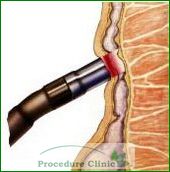Hemorrhoids describes both a series of blood vessels in the perianal area as well as the condition that afflicts them, typically in older adults. With age these hemorrhoids can become swollen and inflamed, resulting in itching, pain, bleeding, thrombosis, and infection. While not deadly, hemorrhoids can often be a nuisance to the point of debilitation. So how do we treat them?
 There have been many methods devised to treat hemorrhoids since ancient times, ranging from medicinal plants, topical creams, to hemorrhoidectomy, rubber band ligation, and more. The most common method, which we use most often, is infrared coagulation, or IRC. Infrared coagulation is a non-surgical procedure that is a convenient and minimally invasive way to treat hemorrhoids.
There have been many methods devised to treat hemorrhoids since ancient times, ranging from medicinal plants, topical creams, to hemorrhoidectomy, rubber band ligation, and more. The most common method, which we use most often, is infrared coagulation, or IRC. Infrared coagulation is a non-surgical procedure that is a convenient and minimally invasive way to treat hemorrhoids.
There is generally no special preparation needed for IRC. During the procedure, a small probe will be placed into the anus which will flash infrared light onto the surface of the hemorrhoid. The heat from the infrared probe will burn the hemorrhoid, creating scar tissue that cuts off blood supply to the hemorrhoid and causes it to shrink and die.
You may feel some heat and pain, but the discomfort is minimal, and the treatment only takes a few minutes.
After the procedure you may feel the urge to defacate or a feeling of fullness in the lower abdomen. These are temporary. It is also possible to experience some rectal bleeding, which should stop on its own.
It’s a good idea to take some stool softener to help ease bowel movements in the days following the procedure. Do not take aspirin or any NSAIDs. It is also a good idea to regularly exercise and maintain proper diet and bowel habits going forward.
 IRC offers major advantages to patients over previous hemorrhoid treatment methods:
IRC offers major advantages to patients over previous hemorrhoid treatment methods:
• Fast, simple, and safe solution
• No anesthesia required
• No special preparation needed
• No recovery time after treatment
• Clinically proven results
• Covered by all major insurance companies




